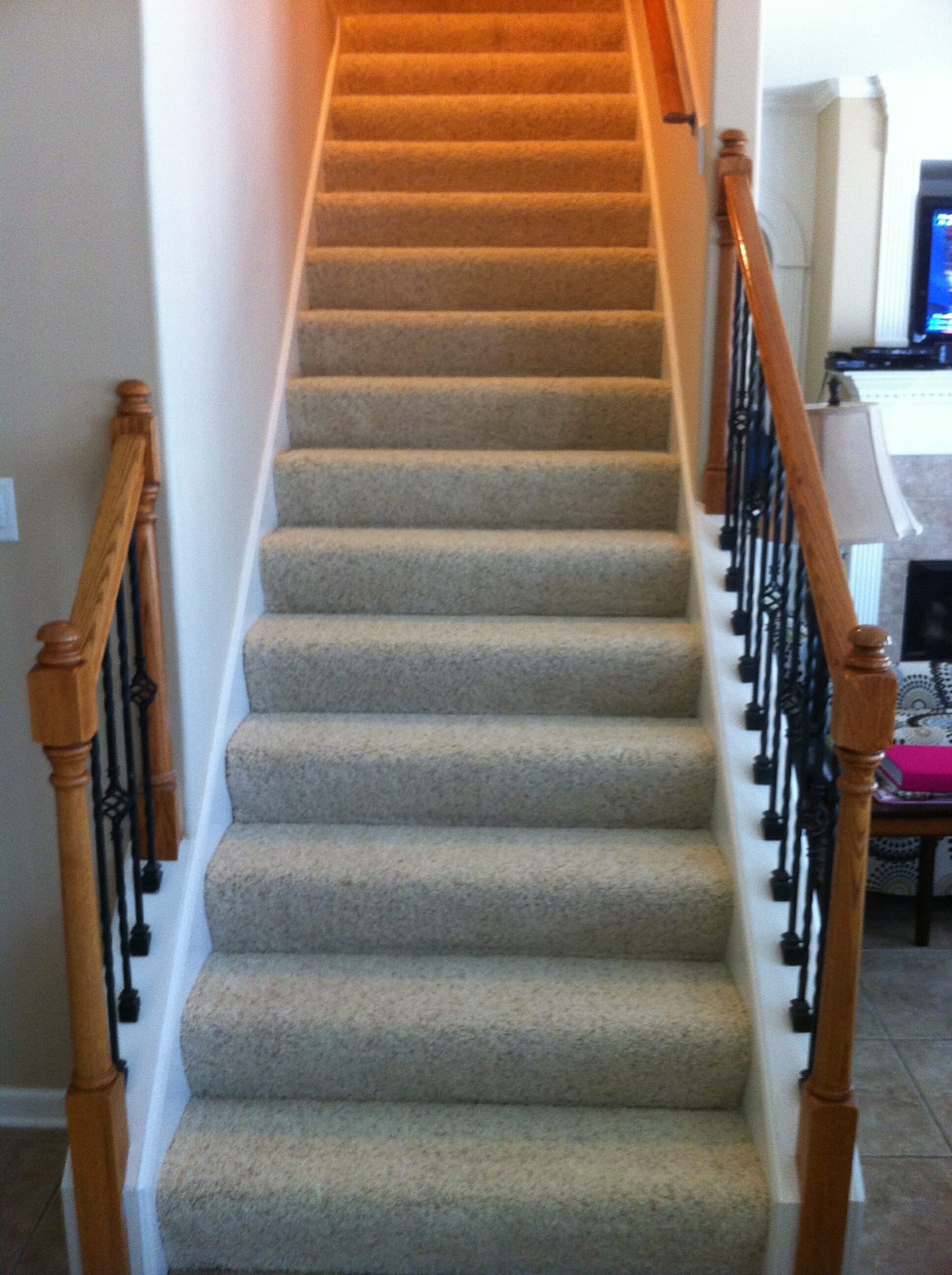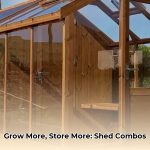Want to transform your stairs from drab to fab? Carpeting your stairs can add a touch of elegance, warmth, and safety to your home. This guide will walk you through everything you need to know about carpeted stairs, from design inspiration to cost considerations and smart maintenance tips.
Enhancing Your Home’s Style and Comfort with Carpeted Stairs
Carpeted stairs aren’t just about aesthetics (though they can definitely elevate your home’s style game). Imagine stepping onto soft, plush carpet instead of cold, hard wood—it’s an instant comfort upgrade. But the benefits go beyond just cozy vibes.
Why Choose Carpeted Stairs?
- Enhanced Safety: Carpet adds grip, making those trips up and down the stairs safer, especially for kids and older adults.
- Noise Reduction: Say goodbye to echoing footsteps! Carpet acts as a sound absorber, making your home more peaceful.
- Warmth and Comfort: No more cold feet on chilly mornings! Carpet provides insulation, keeping your feet warm and comfy.
Things to Consider:
- Maintenance: Carpets, especially on stairs, require regular vacuuming and occasional deep cleaning.
- Allergies: Carpets can trap allergens. Choose hypoallergenic materials and maintain a regular cleaning routine if allergies are a concern.
- Wear and Tear: High-traffic areas like stairs can cause wear over time.
Selecting the Ideal Carpet for Your Stairs
Choosing the right carpet is crucial for both aesthetics and practicality. Here’s a breakdown:
-
Material Selection:
- Wool: Offers luxurious comfort and durability, but may come at a higher price point.
- Nylon: Known for exceptional stain and soil resistance, making it ideal for busy households.
- Blends: Combine the benefits of different materials, offering a balance of performance and value.
-
Pile Type:
- Cut Pile: Provides a plush, luxurious feel.
- Loop Pile: Known for its durability and ability to withstand heavy traffic.
- Cut & Loop: Offers a textured look that combines the best of both worlds.
Installation: DIY or Call in the Pros?
Once you’ve chosen your perfect carpet, it’s time for installation!
- DIY Installation: Possible for those with experience and the right tools, but it requires precision and attention to detail, especially on stairs.
- Professional Installation: Recommended for a flawless, stress-free experience, ensuring proper installation techniques and a polished look.
Maintaining Your Carpeted Stairs
Keep your carpeted stairs looking their best with these simple care tips:
- Regular Vacuuming: Vacuum frequently to remove dirt and debris before they become embedded in the fibers.
- Prompt Stain Removal: Address spills and stains immediately using a carpet cleaner specifically designed for the type of stain.
- Periodic Deep Cleaning: Schedule professional deep cleaning every 12-18 months to remove deeply embedded dirt and refresh the carpet fibers.
Important Considerations for Carpeted Stairs
- Eco-Friendly Options: Consider carpets made from recycled materials for a more sustainable choice.
- Accessibility: Non-slip surfaces and contrasting colors on the stairs can enhance safety, especially for those with mobility challenges.
- Tech Integration: Motion-activated stair lights add convenience and safety, illuminating your stairs at night.
Is Carpet the Right Choice for Your Stairs?
While carpet adds warmth, style, and safety, it’s essential to weigh the pros and cons before making a decision:
Pros:
- Softens Falls: Provides cushioning in case of slips or trips.
- Enhances Comfort: Feels softer and warmer underfoot than hard surfaces.
- Reduces Noise: Acts as a sound absorber, minimizing noise from foot traffic.
- Design Versatility: Available in a wide range of colors, patterns, and textures to complement any décor.
Cons:
- Potential Tripping Hazard: Worn or loose carpeting can pose a tripping risk.
- Slip and Slide: Certain carpet materials, particularly olefin or polyester, can be slippery, especially when wet.
- Maintenance Demands: Requires regular cleaning, including vacuuming and deep cleaning.
Exploring Alternatives to Carpeting
If you’re not sold on carpet, consider these alternatives:
- Stair Runners: Offer a stylish compromise, combining the elegance of hardwood with a strip of carpet down the center of the stairs.
- Hardwood with Non-Slip Treatments: Provide a sleek, modern look while addressing slip concerns.
- Stair Treads: Individual coverings for each step, offering design flexibility and easy replacement.
Unveiling the Cost of Carpeted Stairs: What Impacts the Price?
The cost of carpeting stairs can vary significantly based on several factors:
- Carpet Material: Wool and high-pile carpets tend to be more expensive than nylon or low-pile options.
- Staircase Size and Shape: Larger, more complex staircases require more material and labor, impacting the overall cost.
- Labor Costs: Installation costs can vary depending on the installer’s experience, the complexity of the staircase, and your geographic location.
- Additional Expenses: Factor in the costs of carpet padding, stair nosing, furniture removal, and disposal of old materials.
Saving Money on Your Stair Carpeting Project
- Shop Around: Obtain quotes from multiple installers to compare prices.
- Negotiate: Don’t be afraid to ask for discounts or price matching.
- Consider DIY: If you’re handy, installing the carpet yourself can save on labor costs, but it’s a meticulous process that requires careful attention to detail.
Why Carpeting Stairs Often Costs More Than You’d Expect
While the material cost of carpeting stairs might seem comparable to flooring, the installation process is considerably more labor-intensive. Here’s why:
- Precision Cutting and Fitting: Stairs require precise measurements and intricate cuts to ensure the carpet fits snugly around each step, riser, and corner.
- Specialized Expertise: Installers need experience and skills to navigate the complexities of stair carpeting, including working around spindles, railings, and unique staircase designs.
- Time Consumption: The intricate nature of stair carpeting means installations take longer, leading to higher labor costs.
Making Informed Decisions for Your Home
Ultimately, the best choice for your stairs depends on your budget, lifestyle, and priorities. Consider these key factors:
- Safety: Prioritize slip-resistant materials and proper installation techniques for optimal safety.
- Durability: Opt for carpets designed for high-traffic areas to ensure longevity.
- Maintenance: Choose materials that align with your cleaning routine and lifestyle.
- Aesthetics: Select a style that complements your home’s décor and personal preferences.
By carefully considering these factors, you can make an informed decision that enhances the safety, beauty, and value of your home for years to come.
People’s Statements:
“Carpeting stairs can reduce depth perception, and it actually shrinks the stair tread depth up to a half-inch. Certain kinds of carpets can be slippery, as well. Avoid thick carpets, carpets with loose or natural fibers, olefin, and polyester on stairs.” – Creative Carpet Inc.
“Although not every homeowner likes the look of carpet on stairs, carpeted stairs is generally a wiser choice than uncarpeted stairs for seniors or families with children. If a family member falls, carpet is a softer surface on which to land.” – Bob Vila
“Carpeting on stairs can be a good choice for senior family members if the carpeting is in good condition. However, if the carpet materials are wrong or the carpeting is worn, it could make the steps more dangerous than if there was no carpeting.” – SeniorSafetyAdvice.com
“Fully carpeted stairs are the best option for a flight of stairs, as the padding installed under the carpeting can help to cushion a fall, if it happens.” – The Spruce
“When carpeting your home, the flooring company may offer to carpet the stairs, too. On a per-square-footage basis, stairs are more difficult to carpet than floors because of the cutting, tucking, and tacking required to get the carpeting tight on the stairs. The offer to carpet the stairs usually represents an extra fee.” – The Spruce
How much should it cost to carpet stairs? – carpeted stairs
How Much Does It Cost to Carpet Stairs? Unveiling the Factors & Finding the Best Deals
Recommended Titles:
- Carpet Stair Cost Calculator: 2024 Price Guide & Factors (Focuses on providing practical value with a calculator angle)
- Carpeted Stairs on a Budget: Expert Tips to Save Money (Targets a budget-conscious audience & offers solutions)
- Hardwood vs. Carpet Stairs: Cost Breakdown & Which is Right for You? (Compares options, appealing to a wider audience)
Powerful Key Lines:
- Carpeting your stairs costs $300 to $2,500 on average, but hidden factors like stair shape and installer fees can significantly impact your final price. (Highlights the range AND warns about unexpected costs)
- Straightforward stairs with basic carpet? Expect to pay around $650. Intricate designs and premium materials? Be prepared to budget closer to $2,500. (Provides quick estimates for different project complexities)
- Homeowners are often surprised to learn that labor can cost MORE than the carpet itself. We break down the expenses to help you negotiate the best deal. (Focuses on a pain point: unexpected labor costs)
- Replacing old carpet with hardwood? It might seem pricey upfront ($75-$200/stair), but the long-term value and aesthetic appeal could be worth the investment. (Presents an alternative and highlights long-term benefits)
Structured Context:
I. Understanding the Cost of Carpeting Stairs
- Overall Range: $300 – $2,500
- National Average: $650 (based on a straight flight of 12 steps, no spindles, using 6 sq. yd. of level loop Triexta carpet)
- Lowest Cost Example: $300 (using 6 sq. yd. of budget-friendly Berber olefin carpet on a simple straight staircase)
II. Factors Affecting Cost:
-
Carpet Material:
- Budget-Friendly: Berber olefin
- Mid-Range: Level loop Triexta
- Premium: Wool, patterned carpets, high pile
- Note: Material cost is typically calculated per square foot or square yard.
-
Staircase Size & Shape:
- Straight Stairs: Cheapest and easiest to carpet
- Curved Stairs: $500 – $1,300 due to complex cuts and increased installation time
- Stairs with Spindles: Labor costs increase due to the intricate work around each spindle
-
Labor Costs:
- Average Range: $129 – $358 for a standard 12-step staircase
- Factors Affecting Labor: Staircase complexity, installer’s experience, geographic location
- Additional Fees: Some installers charge $1-$2 per sq. ft. of carpet on top of labor
-
Additional Costs:
- Carpet Padding: Adds comfort and longevity to your stairs.
- Stair Nosing: Provides a finished look and protects the edges of the steps.
- Furniture Removal: May be an extra fee if the installer needs to move furniture.
- Disposal of Old Carpet: Most installers will charge a fee for this service.
III. Replacing Carpet with Hardwood:
- Cost: $75 – $200 per stair for new hardwood installation
- Existing Hardwood: $100 – $300 for carpet removal and refinishing (if applicable)
IV. Carpeted vs. Hardwood Stairs:
Carpeted Stairs:
- Pros: More affordable, softer underfoot, better traction, noise reduction, more design options
- Cons: Shorter lifespan, harder to clean, can trap allergens
Hardwood Stairs:
- Pros: Durable, classic look, increases home value, easier to clean
- Cons: More expensive, slippery, colder and louder underfoot
V. Calculating Carpet Needed:
- Measure the length and width of each step.
- Add these measurements together.
- Multiply the total by the number of stairs.
- Add extra for waste and pattern matching (if applicable).
Unique Insights and Untapped Potential:
- Focus on DIY options: Provide a step-by-step guide for carpeting stairs yourself, highlighting potential cost savings and common pitfalls to avoid.
- Sustainability Angle: Discuss eco-friendly carpet options, such as those made from recycled materials or natural fibers.
- Highlighting Long-Term Value: While carpet may have a shorter lifespan than hardwood, explore options with longer warranties or stain-resistant properties to underline value.
- Safety First: Dedicate a section to safety considerations for carpeted stairs, like proper padding and installation techniques to prevent slips and falls.
**By incorporating these elements and insights, your article will provide comprehensive and valuable information on the cost of carpeting stairs, allowing you to outperform competitors and become a go-to resource for readers. **
Why are stairs so expensive to carpet? – carpeted stairs
Why Is Carpeting Stairs So Expensive? Unraveling the Hidden Costs
You’re ready to upgrade your stairs with elegant, comfortable carpeting, but then you see the price tag. Why is it so much higher than you expected? Let’s break down the factors that make carpeting stairs a pricier endeavor than carpeting a flat floor.
It’s More Than Just Materials
While the type of carpet you choose certainly plays a role in the cost, the primary driver of higher prices lies in the complexity of installation.
- Precision and Expertise: Carpeting stairs is a meticulous process that demands precise measurements, intricate cuts, and expert fitting around each step, riser, and those tricky corners. This intricate work takes significantly longer than installing carpet on a flat surface, resulting in higher labor costs.
- Specialized Skillset: Installers need experience and expertise to ensure a seamless, safe, and aesthetically pleasing result. They must navigate spindles, railings, and unique staircase designs, all while ensuring the carpet lies flat and avoids unsightly bunching.
Material Costs: Durability and Safety Matter
The demands placed on stair carpeting are different from those of regular flooring, often necessitating more durable—and expensive—materials.
- High-Traffic Durability: Stairs endure constant foot traffic, making durability a top priority. High-quality, wear-resistant carpets designed for stairs often come at a premium.
- Padding for Safety and Comfort: Stairs typically require thicker, denser padding for cushioning and added safety in case of falls. This specialized padding adds to the overall material expenses.
Beyond the Basics: Additional Costs to Consider
Several hidden factors can contribute to the overall cost of carpeting your stairs:
- Intricate Stair Designs: Spiral staircases, curved designs, or stairs with unique layouts add to the complexity and time required for installation, impacting labor costs.
- Spindles and Railings: Stairs with spindles or detailed railings necessitate meticulous work to ensure the carpet fits perfectly around each element, increasing installation time.
- Removal of Existing Materials: If you need to remove old carpeting or flooring before installation, factor in the additional labor costs.
Is It Worth the Investment?
While carpeting stairs comes with a higher price tag, it’s important to consider the long-term value:
- Enhanced Safety: Carpeting provides better traction, especially for children and older adults, reducing the risk of slips and falls.
- Noise Reduction: Enjoy a quieter home with the sound-absorbing qualities of carpet, reducing noise from foot traffic.
- Increased Comfort and Warmth: Experience a cozier, more inviting atmosphere with soft, warm carpet underfoot.
Exploring Cost-Saving Strategies
- DIY Installation: If you’re handy and up for a challenge, installing the carpet yourself can potentially save on labor costs. However, improper installation can lead to safety hazards and a less polished finish.
- Shop Around and Negotiate: Obtain quotes from multiple installers, and don’t hesitate to ask for discounts or price matching.
- Consider Alternatives: Explore cost-effective alternatives like stair runners or stair treads, which offer some of the benefits of carpeting at a lower price point.
By understanding the factors that influence cost and exploring potential cost-saving strategies, you can make an informed decision about carpeting your stairs that aligns with your budget and preferences.
- 30+ Beautiful Flowers That Start With N (Pictures and Growing Guides) - April 22, 2025
- 40+ Flowers That Start With L: A Comprehensive Guide - April 22, 2025
- 20+ Fabulous Flowers That Start With J: A Complete Guide - April 22, 2025










